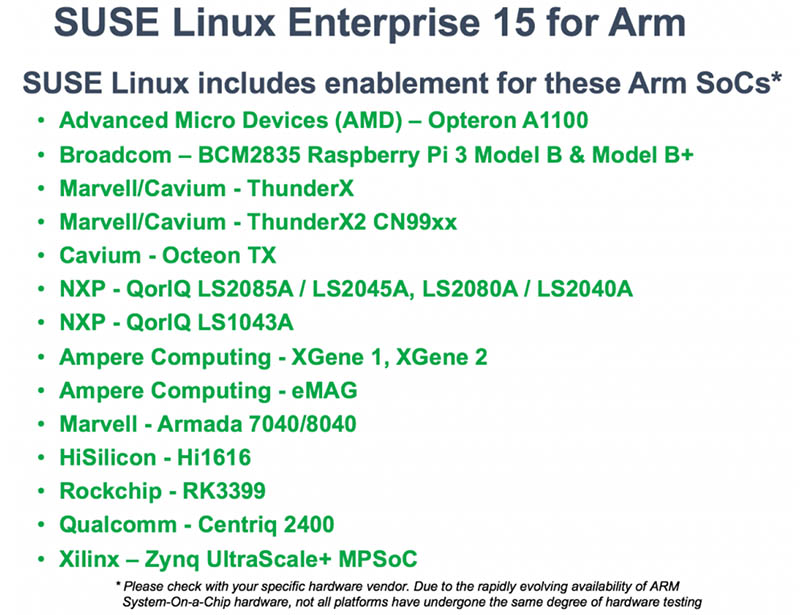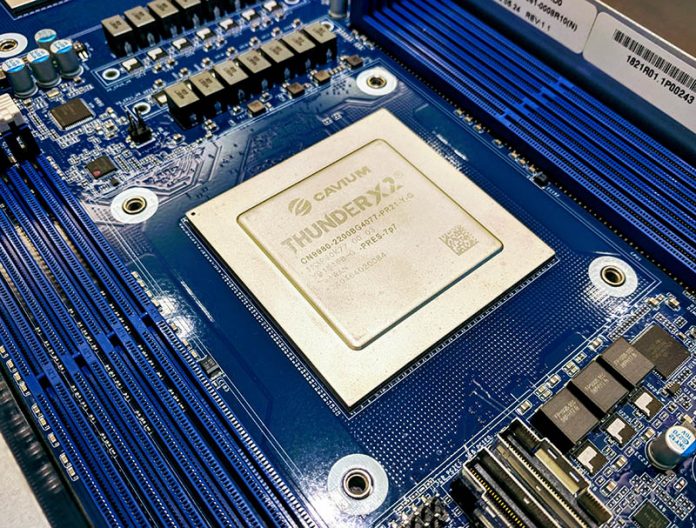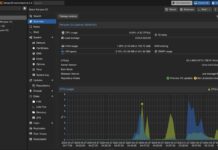In 2019, we are going to see a lot more on Arm servers. Ubuntu and Red Hat (you may read this when Red Hat is part of IBM) have been leading the charge for Linux support of Arm servers. Now, SUSE Linux Enterprise Server and SUSE Manager Lifecycle for Arm subscriptions are available for purchase.
SUSE Linux Enterprise Server for Arm
Subscriptions are great, but it is little surprise for those in the industry that Arm support also carries a specific compatibility list. The Arm community is working on making this unnecessary, or perhaps less necessary in the future, but it is still needed today. Here is the official list.

When we did the original Marvell/ Cavium ThunderX work, Linux support was just turning the corner. Prior to April 2016, running Arm was painful. Fast forward to our ThunderX2 pieces, and Arm servers are now much easier to work with. This is being driven by Ubuntu, Red Hat, and SLES among others that are making it significantly easier to install and use the machines. These distributions also offer official Arm support so customers who need commercial support for Arm servers can now get it.
SLES Arm Licensing and Support
Where things get really interesting: licensing and support. There is a large gap between a Raspberry Pi 3 Model B and a dual socket Cavium/ Marvell ThunderX2 platform with up to 256 threads in the server. If you have 15 cores or less, you buy based on groups of four cores and if you have more, you license by the socket.
The new pricing for SUSE Linux Enterprise for Arm is tied to the number of processor cores in a server. Servers with less than 16 cores are priced based on the number of groups of 4 processor cores. Each group of 4 cores, up to 15 cores, requires a 4-core group subscription that is stackable to a maximum 4 subscriptions. The number of cores is rounded up to the nearest group of 4 cores, therefore a server with 10 cores would require three 4-core group subscriptions.
Servers with 16 or more cores use the traditional 1-2 socket-based pricing.
This hybrid pricing model applies to SUSE products for Arm that have traditionally used socket-based pricing, such as the SUSE Linux Enterprise Server (SLES) for Arm and SUSE Manager Lifecycle. Other SUSE products such as SUSE Enterprise Storage uses server-based pricing and do not use this hybrid pricing. (Source: SUSE Blog)
The blog cited has a few good examples of how this plays out using current systems. While 32-48 core Arm server chips are common today, we saw the Huawei Kunpeng 920 64-Core Arm Server CPU with CCIX and PCIe Gen4 recently launch and 128 core Arm server CPUs are coming. The subscription you get today will very likely have 4x the value on next-generation processors and SUSE will need to think about how their model works in the future.
Final Words
Overall, this is a great development for the industry. Arm has the only realistic chance to supplant a large portion of x86 in the central and edge data center market. While many companies are happy to run OSes without vendor support, it is also a common requirement in selection processes. Incrementally more companies can now deploy Arm servers with SLES having an official support avenue.





As a serious question, who uses SLES nowadays?
One of my previous companies was 85% SLES. Pretty much all the app servers were SLES and most of the utility servers were SLES as well. It was around 2016 when we started to switch to Ubuntu but I’m sure they still have some legacy servers that are on SLES. My work laptop was openSUSE and I still have a laptop with an openSUSE partition at home, just for fun. It’s not bad, but it’s not Gentoo :)
But as for nowadays…I think most people moved on. Just cuz Gentoo and FreeBSD are the best, you know :D
@Slava same observation here that’s why I’m asking. Before 2016 I was seeing quite some people using SLES but now they are completely absent. I guess their choice not to embrace common automation tools and instead stubbornly persist to only support SUSE manager is not paying them dividends.